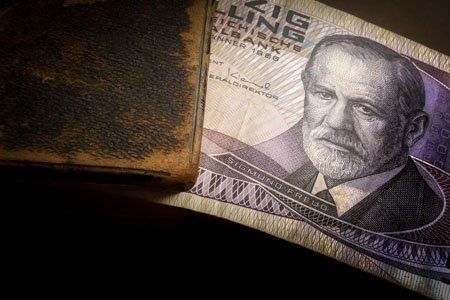When Freud Met Jung
The two founding fathers of psychotherapy revolutionized the field, making psychology degrees popular.

Sigmund Freud and Carl Jung had very different approaches to psychology, but both are considered to be the founders of the modern psychoanalytic movement. Their efforts in a dynamic field has made psychology school a popular choice of study—and students are getting online psychology degrees in record numbers.
Because of Freud and Jung’s different points of view, most of us assume that the two disparate pioneers were enemies, or at least unfriendly toward each other; in truth, they were close friends for quite some time.
In April, 1906 Freud began a correspondence with the young psychiatrist, Carl Jung. They later met in person when Jung traveled to Vienna in 1907 and the two men became fast friends. Their first meeting alone lasted twelve hours. Jung thought of Freud as “extremely intelligent, shrewd and altogether remarkable,” and Freud considered Jung his peer, even calling him “my eldest son,” and deeming him heir to his psychoanalytic process.
Two Influential Psychology Schools of Thought
Over time, cracks in the relationship began to occur. Though Freud had viewed Jung as the most innovative of his many followers, he was unhappy with Jung’s dismissal of some of his basic psychoanalytic tenets. Jung felt Freud’s concept of the unconscious was limited and instead of simply being a reservoir of repressed thoughts and motivations, as Freud believed, Jung argued that the unconscious could also be a source of creativity.
Though theoretical differences defined the ultimate breaking point of their friendship, they both acknowledged that the other man’s respective theories influenced their own ideas. Jung ultimately formed his own influential psychology school of thought known as analytical psychology, while much of Freudian psychoanalytic concepts grew directly out of his work with his patients. As Freud tried to understand and explain their symptoms, he became increasingly interested in the role of the unconscious mind in the development of mental illness.
Read some of the basic principles of the psychoanalytic theories devised by Sigmund Freud and Carl Jung and decide who you most agree with.
Major Freudian Concepts
- Oedipal Conflict—This occurs between the ages of three and five, and the Freudian Oedipus complex has two parts: hatred and a death wish for the parent of the same sex, and love and attachment towards the parent of the opposite sex.
- Transference and Countertransference—Transference is the technical term used to describe an unconscious transferring of experiences from one personal situation to another. This happens frequently between a patient and therapist. Countertransference happens when the therapist responds to the patient’s transference issues with transference issues of his or her own.
The Three Aspects of Personality
- Id—The unconscious, the home of our instincts and impulses and repressed material.
- Ego—The organized part of the personality structure which includes defensive, perceptual, intellectual-cognitive, and executive functions. Conscious awareness resides in the ego, although not all of the operations of the ego are conscious.
- Superego—Develops from the Oedipal Complex. The moral part of our personality, composed of the ego-ideal, the standard of good behavior we aspire to, and the conscience, that inner voice that tells us when we have misbehave.
Major Jungian Concepts
- Oedipal Conflict—For Jung, the Oedipus complex tended to refer only to the experience of male children. Female children experienced the Electra complex in which they regard their mothers as the competition for the exclusive love of their fathers.
- Collective Unconscious—The unconscious of a person is comprised of both a personal unconscious (coming from the experiences of the individual) and a collective unconscious (issuing from the inherited makeup of the brain and common to humanity). This can be thought of as how we are due to our life experience versus how we are based upon our genetic makeup and external forces like societal mores and conditions.
- Theory of Meaningful Coincidence or Synchronicity—Jung’s notion of synchronicity is that there is a principle that links events that have a similar meaning by their coincidence in time rather than linear direction or sequence. He claimed that there is synchronicity between the mind and the phenomenal world of perception.
- Psychological Development Theory—Jung taught that growth toward the realization of an individual’s true potential which continues throughout an entire lifetime rather than being, as Freud thought, limited only to childhood.
Sources: chowk.com; psychology.about.com
